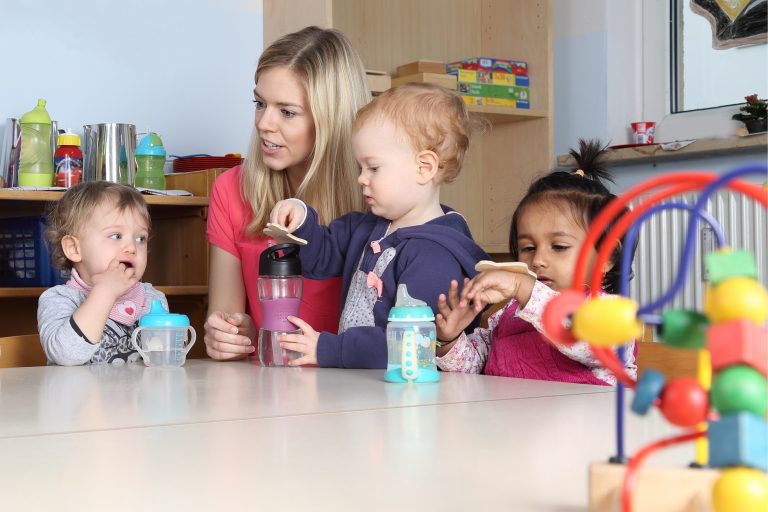What To Look For In Food Photography Services For Your Restaurant
Food photography has become increasingly important in the restaurant industry. In today's digital age, customers rely heavily on visuals when making dining decisions and food photography plays a crucial role...
The Ultimate Vape Bar Checklist
As the vape industry continues to expand, vape bars have become increasingly popular destinations for enthusiasts to gather, relax, and enjoy their favorite flavors. Whether you're planning to open a...
Polish Perfection: Simple Techniques For A Brilliant Car
Owning a car that radiates brilliance and showcases a flawless exterior doesn't require elaborate procedures or professional detailing services. With a few simple techniques, you can achieve polish perfection at...
Custom Kiosks: Tailoring Solutions For Every Industry
Custom kiosks have emerged as versatile tools that cater to the specific needs of diverse industries. From retail to healthcare, hospitality to transportation, and beyond, these tailor-made solutions offer businesses...
How To Choose The Perfect Water Bottle For Your Toddler
As your child grows and begins to explore the world, staying hydrated becomes increasingly important. Choosing the right kids water bottles is a key decision in ensuring they receive the...
Women’s Health Check-ups: A Guide To Well-Being
Women's health is a multifaceted aspect of well-being that requires regular attention and care. Routine health check up Dubai plays a crucial role in maintaining and monitoring women's health throughout...
Which Accessories Are Best For Your Kitchen?
When it comes to equipping your kitchen with the best accessories, it's important to consider functionality, durability, and style. With a wide array of options available, choosing the right accessories...
5 Steps To Organizing Your Kitchen Cabinets
Keeping your kitchen cabinets organized can save you time, money, and stress. Before you start, it's a good idea to clean them out and get rid of any items you...
The 3 Reasons Why Facebook Marketing is Important
Facebook marketing is important for many reasons. If you are not using it to market your company, you should really take the time to explore how it can help your...
Questions to ask a dermatologist during treatment
Routine skin checkups keep you away from developing scars, wrinkles, and other skin issues. Unfortunately, maximum people don't care about their skin and avoid seeing a dermatologist regularly. But in...
Pros and cons of hiring a nanny
Having a good nanny can be a yarn for anyone who has kids. Nannies are way better than daycares because you don’t have to drop the children everyday at the...
Identify the reasons for hiring a top-rated recruitment company
Have you ever thought about recruiting new staff replacing the older ones? It is quite likely that you have just as any other entrepreneur would do. Recruitment is one of...
Information About Demolition Companies
Those countries that think that United Arab Emirates is an ideal city, that they should be found of the work they’ve done to improve themselves to prove themselves should keep...
Steps to take before choosing a preschool for your kid
It is one of those things that you as parents will have to think about doing before admitting your kids to one of the nurseries in Dubai. Keep in mind...
Why you should opt for a teeth whitening procedure
If you are dealing with dental health issues like discolored or stained teeth, then it is highly recommended for you to look for an effective dental procedure for teeth whitening...
Simple ways to reduce waste in cities
Environmental pollution is an incurable disease and one cannot completely diminish the pollution from the surroundings but it is also an undeniable fact that it can be prevented to a...
Importance of serviced offices for startup business
There is no denying the fact that serviced offices for rent in Dubai are the best choice that you can opt for the operations of your startup business. As an...
A word on kitchen consultant – know why you need one
Since you had been planning to renovate your kitchen for some time, now is the time to do it. Long vacations are around the corner and there will be enough...
Looking for a gynecologist? Read this first
It is indeed one of the happiest events in a woman’s life. Being a mother is no ordinary feat, as giving birth to another life and becoming a reason to...
Things you should know about same-day dental implants
Is your damaged tooth causing a lot of pain and you wish to get rid of it as soon as possible? In this case, you would obviously need to opt...
5 Ways You Can Get The Most Of Your Fire Safety Equipment
Fire safety equipment is essential to space, especially for protecting their homes against fire damage. An FM 200 fire suppression system would definitely help deter fire by suppressing the ignition...
Hire freelance writers for these reasons
There are a number of reasons why you should consider taking on the services offered by freelance writers that can be hired through an overseas recruitment agency. These include: Writers...
Why Starting Your Own Business Is A Good Idea
Running a business can be challenging. For one, you need to dedicate time and effort to ensure that your business is running like how it is supposed to be. This...
Finding A Suitable Audience For Your Business In Dubai
Not every businessperson is going to sell the same types of items. There comes a time when will feel the need to find that adequate audience that is willing to...
5 Dubai Acts And Artists To Watch Out For
Music lovers are always looking new artists and acts to listen to. Aside from enjoying the music of known and famous international artists, they also check out local acts that...























